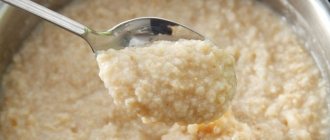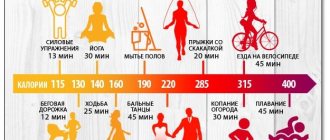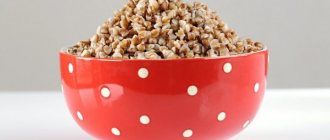What are calories, what are they for, what functions do they perform?
Calories are units in which energy is measured.
In fact, calories measure the amount of energy required to heat 1 g of water by 1 degree Celsius. Throughout the day, a person obtains calories (energy) from food and expends some energy during various activities. Calorie consumption during various activities directly affects the presence of excess weight. If a person engages in physical activity every day, the energy expenditure of calories will be at a high level. And provided that a person consumes fewer calories than he expends, his fat reserves begin to decrease.
It is generally accepted that 1 kg of fat contains 7,000 calories. If the daily calorie intake is in excess, then every 7,000 calories turn into 1 kg of excess fat. To get rid of 1 kg of fat, you need to burn 7,000 calories through training and a deficit diet. The body will replenish lost energy using fat deposits.
1.2. Determination of daily calorie intake
Goal: to determine the compliance of actual nutrition with the basic principles of healthy eating. Tasks: - create a table of your own daily menu for meals (select the day with the most typical diet); — calculate the average daily consumption of proteins, fats, carbohydrates, calories (including by meals), compare them with standards; — determine the ratio between proteins, fats and carbohydrates, compare with standards; - determine the ratio between food substances of animal and plant origin (proteins, fats), and for carbohydrates - the ratio between simple and complex, compare with standards; — determine the content of essential vitamins in daily nutrition (A, E, C, B1, B2), compare with standards; — determine the amount of mineral salts (Ca, P, Fe), compare with standards; — calculate the amount of products containing dietary fiber (in g), compare with standards; - evaluate the diet (number of meals per day, ratio (in%) of food for each meal), compare with standards. Required: standard tables of caloric content of food products (in g per 100 g of product), sample menu layout, calculator. The order of the task. Draw up a table of your own menu in accordance with the sample, carry out the necessary calculations, analyze the obtained figures in comparison with the standards, make recommendations for strengthening the health-improving focus of nutrition. To determine the daily calorie intake, there are various methods: laboratory, menu layout (calculated). The laboratory method is used for the appropriate assessment of nutrition in the conditions of the SES laboratory, where, using special techniques, the content of nutrients in food samples taken in canteens, restaurants, and cafes in the required quantities in special dishes is determined chemically. It is taken into account that food proteins and carbohydrates supply the body with 4.1 kcal per 1 g, and fats - 9.3 kcal / g. The most convenient for educational purposes is the menu layout method. To do this, fill out the table of your own nutrition according to the sample below (Table 4). The layout is done twice: 1. The dish is divided into its constituent products, which must be expressed in grams. For this purpose, there is a table “List of dishes”, where the composition of dishes is indicated in grams per 1 serving (Table 5 and Appendix). 2. Each product is broken down into all its constituent nutrients, based on the amount of product consumed. The tables of the chemical composition of food products (see Appendix) provide figures per 100 g of product. It is necessary to recalculate the amount actually consumed.
Table 5
Then the total consumption of all nutrients (proteins, fats, etc.) and calories per day is calculated in columns, compared with the normative ones (Table 6), and an analysis is made of the balance and rationality of the actual diet (Tables 7, 8, 9). Based on nutritional characteristics, recommendations are given for improving the health of the body by optimizing nutrition.
Energy table for women
One of the important rules of a healthy and nutritious diet is that the energy value of various foods and dishes should compensate for the energy consumption of our body. In other words, ideally you need to eat as much energy as you expended.
Otherwise, two completely understandable options are possible: in one case, with an excess of calories, a person faces an increase in body weight, and in the other, too much energy consumption will, on the contrary, lead to weight loss, which, however, is not bad at all for those who want to lose excess weight! The large table below will help you make an approximate analysis of how to correctly calculate the body’s energy expenditure depending on body weight and a particular activity.
Everything in the human body and activity should be organic. That is why the received energy needs to be thrown out. In what types of activities we spend calories, you will learn from the article.
Human life directly depends on adequate nutrition. The foods consumed are a source of energy and compensate for the body's costs during different types of stress.
- A balanced menu allows you to fully compensate for the calories consumed. That is why it is useful to understand how many calories are consumed per day, and how many come from food.
- Balanced processes will help you maintain good physical shape.
- Increased exercise and low-calorie nutrition lead to weight loss. Excess calories during passive activity provokes weight gain.
- A table of calorie expenditure for various activities helps improve nutrition in relation to physical activity. Having this information, you can speed up the process of losing weight or prevent the accumulation of fat layers.
- It is important to understand that even processes such as sleeping at night or digesting food in the body also consume energy.
- To calculate calorie consumption per day, you need to take into account his gender, weight, height, and health characteristics.
Balancing
The amount of energy consumed is influenced by the following factors:
- Excess body fat slows down energy metabolism.
- Systematized physical activity helps build muscles and increases energy metabolism by up to 15%.
- A feverish state requires additional energy expenditure.
- Uncomfortable body temperature is compensated by additional energy consumption.
- No more than 80% of all energy is spent on daily processes. The consumption of other calories depends on the influence of the external environment.
- Duration of sleep – quality rest is at least 8 hours a day.
- Stressful situations during the day.
- Eating food late in the day.
You can calculate the amount of calories in foods using formulas. Depending on gender and age category, the numerical components change.

Daily calorie intake for a woman:
- From 18 to 30 years old - 240*(0.062*weight 2.036)
- From 31 to 60 years – 240*(0.034*weight 3.54)
Daily calorie intake for a man:
- From 18 to 30 years old - 240*(0.063*weight 2.9)
- From 31 to 60 years – 240*(0.05*weight 3.65)
The resulting value is multiplied by the physical activity indicator:
- low load corresponds to a factor of 1.1
- moderate load corresponds to a coefficient of 1.3
- high load corresponds to a factor of 1.5
How much do we eat?
You can calculate the daily amount of calories burned using the formula:
- For a woman - body weight*0.9*24
- For a man - body weight*24
To compare the number of calories consumed and consumed, it is necessary to keep a written record of all meals and a table of calorie consumption during physical activity on a daily basis. In this case, the diet should consist of healthy nutritious foods.
- So, let's find out how many calories a person spends per day, burns during sedentary work, if doing nothing, during everyday household activities, at work, during physical activity, playing sports, performing individual exercises?
- Calorie consumption during working hours is calculated depending on the profession. Office workers burn the least amount of calories.
- Education and service professionals spend twice as much energy. Drivers and factory workers use three times more energy than managers.
- Hard physical labor requires 4 times more energy expenditure.
- Everyday household chores also require calorie expenditure. Do not underestimate the needs of the body when performing household chores. To compare different types of activities, we will analyze several examples in numbers based on 50 kg of weight and 60 minutes of employment.
| Kind of activity | Calorie consumption for various activities |
| Watch TV | 20 |
| Iron the laundry | 29 |
| Make the bed | 43 |
| Prepare food | 54 |
| Sedentary work | 54 |
| Office work | 57 |
| Police job | 66 |
| Working at the computer | 72 |
| Hand sewing | 78 |
| Car repairs | 80 |
| Wash the floors | 86 |
| Gardening | 96 |
| To wash the dishes | 100 |
| Buy products | 107 |
| Machine control | 110 |
| Shoemaker's work | 129 |
| Mow the lawn | 143 |
| Vacuum the carpet | 146 |
| Construction works | 146 |
| Miner's work | 160 |
| Weed the garden | 164 |
| Chop wood | 214 |
| Massage therapist's work | 210 |
| Bricklayer's work | 286 |
| Firefighter job | 317 |
- The calorie consumption table shows that maintaining order in the house requires considerable energy expenditure. A regular trip to the store also burns up calories. Any daily activity does not pass without leaving a mark on our body. To lose weight, you don’t have to go to the gym, it’s enough to be active.
- Athletes expend more energy through muscular effort. When playing sports, all body systems are involved. Let's consider which sports burn a large number of calories and calculate 50 kg of weight per 1.5 hours of training
| Kind of activity | Number of calories |
| Run | 350-550 |
| Water aerobics | 380 |
| Swimming | 345-535 |
| Yoga | 300 |
| Badminton | 350 |
| Gymnastics | 170-200 |
| Figure skating | 180 |
| Ballroom dancing | 190 |
| Modern dance | 230-350 |
| A ride on the bicycle | 220-380 |
| Roller skating | 220 |
| Table tennis | 146 |
| Basketball | 270 |
| Football | 320 |
| Exercises in the gym | 370 |
| Struggle | 800 |
- Housework is good fitness. A striking example is young mothers. During pregnancy, excess weight is gained. So, in order to lose weight after childbirth, it is not at all necessary to start grueling workouts.
Around the house
- Caring for your baby will help your body cope with excess calories. Let's consider how much calories a woman spends caring for a child for an hour with a weight of 50 kg.
| Kind of activity | Number of calories |
| Walking with a stroller | 108 |
| Walking with children | 180 |
| Bathing a child | 134 |
| Games with a child | 200-270 |
| Feeding the baby | 100 |
| Dressing a child | 110 |
- The more movements you do, the more calories you burn. Combining a regular walk with active games or walking the dog can burn a lot of calories.
- Walking in the cold season requires more energy, so when you come home you really want to have a hearty meal.
Practice at home
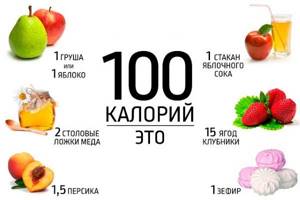
It is very important to build the correct ratio of the products consumed and the actions performed. Most diseases occur due to an imbalance in the ratio of components in food.
What are your energy costs?Energy consumption
- If you listen to the symptoms of the body, you can identify and correct the problem. For example, excessive consumption of fat leads to atherosclerosis and kidney disease.
- Excess glucose provokes diabetes. Lack of vitamins leads to hypovitaminosis.
- Let's look at what actions you can take to compensate for the calories you eat.
| Food product | Number of calories | Walking, min | Run, min |
| Carrot | 45 | 8 | 2 |
| Apple | 101 | 19 | 5 |
| Bread and butter | 78 | 15 | 4 |
| Fried potatoes | 108 | 21 | 6 |
| 1 fried egg | 110 | 21 | 6 |
| 1 glass of milk | 166 | 32 | 9 |
| 1 ice cream | 193 | 37 | 10 |
| Meat chop | 300 | 60 | 16 |
| Bread with cutlet | 350 | 67 | 18 |
| 100 g cake | 360 | 70 | 20 |
| Portion of vermicelli | 396 | 76 | 20 |
Thus, up to 900 calories are needed to perform daily work. To significantly increase this indicator, you need to play sports. If you want to lose weight, then in combination with physical activity you need to reconsider the number of calories you consume.
To feel good and look great, a person must ensure that the nutritional value of foods and dishes compensates for the body’s energy costs.
Simply put, you need to eat as much energy as you expend.
Otherwise, the balance of calories consumed and spent is disrupted. And this threatens obesity or various diseases from calorie deficiency.

That is why a person must know how many calories he spends on various activities.
And for those who want to lose weight, it is recommended that they plan their calorie consumption every day while taking into account physical activity, based on tables and calculators.
Energy expenditure is the amount of energy that the body uses to maintain its vital functions, perform physical tasks, digest food, that is, perform basic functions.
The main exchange occurs during the functioning of the nervous, cardiovascular, respiratory, digestive, excretory, immune, reproductive, endocrine and other systems.
Main article: Metabolic adaptation to weight loss: implications for the athlete
Energy expenditure of human muscles, organs and tissues depending on gender, age category and body weight
Table of energy consumption of human organs and tissues
A person's total daily energy expenditure is made up of a number of individual components. The largest component is energy expenditure at rest, this is energy expenditure on basal (basic) metabolism[1]. Another component is energy expenditure during activity. It in turn can be divided into:
- energy expenditure for thermogenesis during sports exercise
- energy expenditure for thermogenesis during non-exercise activities
- energy loss due to the thermic effect of food
The rate of metabolism is a dynamic value. Energy deficiency in the body and weight loss affect the body's energy metabolism. In particular, with active reduction of body weight, the total daily energy expenditure of a person decreases. In addition, weight loss reduces the volume of tissue involved in metabolism, and thereby reduces the overall metabolic rate[2][3].
Often, the amount by which total daily energy expenditure is reduced is greater than that calculated based on the amount by which total body weight is reduced. In a number of studies, this fact is explained by the body’s desire to restore normal (basic) body weight [4][5][6].
Energy consumption during various physical activities
| Labor activity | kcal/min*kg |
| work as a bartender | 0.0439 |
| work as a carpenter | 0.062 |
| work as a sports trainer | 0.07 |
| work as a miner | 0.106 |
| working at the computer | 0.024 |
| Construction | 0.097 |
| work as a clerk | 0.031 |
| fireman job | 0.211 |
| work as a forester | 0.1409 |
| work as a heavy machine operator | 0.0439 |
| heavy hand tools | 0.1409 |
| horse care | 0.106 |
| office work | 0.0206 |
| work as a mason | 0.123 |
| work as a massage therapist | 0.07 |
| police work | 0.0439 |
| studying in class | 0.031 |
| steelworker job | 0.1409 |
| work as an actor in the theater | 0.053 |
| truck driver job | 0.035 |
| Housework | kcal/min*kg |
| baby care (bathing, feeding) | 0.062 |
| children's games | 0.0879 |
| Cooking | 0.0439 |
| grocery shopping | 0.062 |
| heavy cleaning | 0.079 |
| Moving furniture | 0.106 |
| moving boxes | 0.123 |
| unpacking boxes | 0.062 |
| playing with a child (moderate activity) | 0.07 |
| games with a child (high activity) | 0.0879 |
| reading while sitting | 0.02 |
| standing in line | 0.0219 |
| Dream | 0.0109 |
| watching TV shows | 0.013 |
| Fitness, aerobics | kcal/min*kg |
| light aerobics | 0.097 |
| aerobics intense | 0.123 |
| easy step aerobics | 0.123 |
| step aerobics intensive | 0.1759 |
| water aerobics | 0.7 |
| cycling trainer (medium activity) | 0.123 |
| cycling trainer (high activity) | 0.185 |
| rhythmic gymnastics (heavy) | 0.1409 |
| rhythmic gymnastics (easy) | 0.079 |
| rider-type exercise equipment | 0.0879 |
| rowing machine (medium activity) | 0.123 |
| ski simulator | 0.167 |
| stretching (hatha yoga) | 0.07 |
| body-building | 0.121 |
| crossfit | 0.202 |
| Sport | kcal/min*kg |
| archery | 0.062 |
| badminton | 0.079 |
| basketball | 0.114 |
| billiards | 0.0439 |
| Mountain bike | 0.15 |
| bike 20 km/h | 0.1409 |
| bike 25 km/h | 0.1759 |
| bike 30 km/h | 0.211 |
| bike 35 km/h | 0.2899 |
| skittles | 0.053 |
| boxing | 0.158 |
| curling | 0.07 |
| fast dancing | 1.06 |
| slow dancing | 0.053 |
| fencing | 0.106 |
| American football | 0.158 |
| golf | 0.097 |
| handball | 0.211 |
| walking in nature | 0.106 |
| hockey | 0.1409 |
| horseback riding | 0.07 |
| kayaking | 0.0879 |
| martial arts | 0.1759 |
| terrain orientation | 0.158 |
| race walking | 0.114 |
| racquetball | 0.123 |
| mountaineering (climbing) | 0.194 |
| roller skating | 0.123 |
| rope jumping | 0.1759 |
| running 8.5 km/h | 0.1409 |
| running 10 km/h | 0.1759 |
| running 15 km/h | 0.255 |
| running in nature | 0.158 |
| skateboarding | 0.0879 |
| cross-country skiing | 0.1409 |
| skiing from the mountains | 0.106 |
| luge | 0.123 |
| snorkeling | 0.0879 |
| football | 0.123 |
| softball | 0.0879 |
| swimming (general) | 0.106 |
| fast swimming | 0.1759 |
| backstroke | 0.1409 |
| swimming (breaststroke) | 0.1759 |
| swimming (butterfly) | 0.194 |
| swimming (crawl) | 0.194 |
| tennis | 0.123 |
| volleyball (game) | 0.053 |
| volleyball (competition) | 0.07 |
| Beach volleyball | 0.1409 |
| walking 6 km/h | 0.07 |
| walking 7 km/h | 0.079 |
| walking 8 km/h | 0.0879 |
| fast walk | 0.106 |
| water skiing | 0.106 |
| water polo | 0.1759 |
| water volleyball | 0.053 |
| struggle | 0.106 |
| Work in the country | kcal/min*kg |
| gardening (general) | 0.079 |
| wood chopping | 0.106 |
| digging holes | 0.0879 |
| stacking and carrying firewood | 0.0879 |
| work in the garden (weeding) | 0.081 |
| laying turf | 0.0879 |
| working with a lawn mower | 0.079 |
| planting in the garden | 0.07 |
| tree planting | 0.079 |
| rake work | 0.07 |
| cleaning leaves | 0.07 |
| manual snow removal | 0.106 |
| Home (car) repair | kcal/min*kg For a powerful workout, comrade! |
| car repair | 0.053 |
| carpentry work | 0.106 |
| furniture repair | 0.079 |
| drain cleaning | 0.0879 |
| laying carpet or tiles | 0.079 |
| roofing | 0.106 |
| wiring | 0.053 |
Human energy consumption and food intake[edit | edit code]
Main article: Metabolic adaptation to weight loss: implications for the athlete
Energy consumption of human muscles, organs and tissues depending on gender, age category and body weight Table of energy consumption of human organs and tissues
Total daily energy expenditure of a person
consists of a number of individual components. The largest component is energy expenditure at rest, this is energy expenditure on basal (basic) metabolism[1]. Another component is energy expenditure during activity. It in turn can be divided into:
- energy expenditure for thermogenesis during sports exercise
- energy expenditure for thermogenesis during non-exercise activities
- energy loss due to the thermic effect of food
Metabolic rate
– dynamic quantity. Energy deficiency in the body and weight loss affect the body's energy metabolism. In particular, with active reduction of body weight, the total daily energy expenditure of a person decreases. In addition, weight loss reduces the volume of tissue involved in metabolism, and thereby reduces the overall metabolic rate[2][3].
Often, the amount by which total daily energy expenditure is reduced is greater than that calculated based on the amount by which total body weight is reduced. In a number of studies, this fact is explained by the body’s desire to restore normal (basic) body weight [4][5][6]. It is adaptive thermogenesis that can explain the occurrence of a plateau in weight loss, as well as the body’s predisposition to weight gain after stopping the diet.
Energy consumption during various physical activities
In addition, when body weight is reduced, the level of thermogenesis during exercise decreases[7][8][9]. Obviously, for activities that require movement of the body, reducing total body mass will reduce the amount of energy required to perform the exercise. However, if an athlete uses weights to increase his weight to the original weight, the energy consumption for performing the exercise remains lower than it was before the reduction in body weight. It is assumed that this increase in muscle efficiency may be associated with hypothyroidism and hypoleptinemia, which accompany weight loss, which leads to a decrease in the respiratory quotient and an increase in the proportion of lipid metabolism [10].
Thermic effect of food
includes energy costs for food intake, absorption, metabolism and nutrient storage[11]. The thermic effect of food accounts for approximately 10% of total daily energy expenditure[12][13]. This proportion may vary depending on the type of diet. At the same time, the relative magnitude of the thermic effect of food does not change during energy deficiency in the body [14], despite the fact that with a low-calorie diet, naturally, the absolute value of the thermic effect of food will be lower than with a regular diet.
Energy expenditure for non-exercise activities
(daily activity) also decrease with the onset of energy deficiency[15]. There is evidence that the level of spontaneous physical activity decreases with a general energy deficit in the body, and may remain reduced for some time even after a return to normal food intake[16]. This factor may also contribute to weight gain after stopping a special diet. In general, to effectively reduce body weight, the level of energy intake must be determined based on individual energy expenditure during the day. In the context of weight loss, this process is complicated by the fact that energy expenditure is dynamic throughout the day. During weight loss, there is often a decrease in total energy expenditure (including energy expenditure during exercise and non-exercise activities), as well as overall metabolic rate and energy expenditure due to the thermic effect of food. As a result of the initiation of the process of adaptive thermogenesis, total energy expenditure is reduced by an amount greater than can be predicted based on the observed decrease in body weight. At the same time, the process of adaptive thermogenesis, as well as a decrease in total energy expenditure, is observed even after the cessation of active weight loss [17] [18]. These changes are due to the body's desire to minimize energy deficit, as well as prevent further weight loss.
To obtain ATP from energy substrates, the body requires a series of chemical reactions. In the case of aerobic metabolism, this process involves the movement of protons across the inner mitochondrial membrane. With the help of ATP synthase, the energy of protons is directed to the synthesis of ATP. At the same time, protons can leak through the inner membrane via uncoupling proteins (UCPs)[19]. In this case, oxygen consumption and oxidation of energy substrates occur, but ATP synthesis does not occur. Proton leakage is a fairly significant factor in the body’s energy consumption. For example, in rats it can account for 20-30% of the total energy expenditure for metabolism [20][21][22].
Obese people have lower amounts of brown fat and a reduced metabolic rate in brown fat cells. This has been shown to be associated with increased serotonin concentrations in peripheral tissues, including adipose tissue. Serotonin reduces energy expenditure and, as a result, can lead to obesity and diabetes.[23]
What factors influence the rate of calorie expenditure?
The main factor influencing energy expenditure is age. The older a person is, the slower the metabolism occurs in his body, which means that fat deposits accumulate more actively. Calorie expenditure is affected by heart rate.
An increase in heart rate leads to an increase in the amount of oxygen supplied, which the body requires for oxidative processes. In this case, blood moves faster through the vessels, delivering oxygen and nutrients to all parts of the body. Saturation of cells with oxygen leads to increased metabolism and intensive consumption of calories.
In order for the body to start burning calories, it is necessary to increase your pulse from 60% to 80% of the maximum heart rate (HR) and maintain these indicators throughout the entire workout.
For each person, individual indicators are calculated using the following formula:
- (220 – age) * 60%.
- (220 – age) * 80%.
For example, for a 20-year-old girl, the optimal heart rate interval will be:
- (220 – 20) * 0,60 = 120.
- (220 – 20) * 0,80 = 160.
To increase energy expenditure, it is enough for this girl to keep her pulse in the range from 120 to 160 beats per minute. Metabolism is affected by a person’s height and weight, and the percentage of fat and muscle tissue.
It is believed that girls have a much slower metabolism than men, since men by nature have tall height, more muscles and less subcutaneous fat due to the main male hormone - testosterone. Due to this fact, a woman needs to consume fewer calories per day than a man.
For example, the average man with 23% body fat needs to consume 2,000 calories per day, with the rest going to body fat; An athlete with 15% body fat and a moderate amount of muscle already needs to consume at least 2800 calories. Girls have a more difficult time in this regard.
The female body normally produces a small amount of testosterone and a moderate amount of estrogen. With such a hormonal imbalance, it is difficult to build muscle, but you can burn excess fat if you do intense cardio, strength training and a balanced diet. Calorie consumption during various activities also depends on a person's daily activity.
With intense exercise of any load 2-4 times a week for 40-90 minutes, the minimum threshold for the number of calories consumed increases. The body needs to use more energy during the recovery period. Another factor influencing the energy consumption of an organism is a person’s profession.
Office work involves sedentary activity, which negatively affects metabolism. It is easier for office workers to succumb to temptations in the form of collective tea parties with sweets. Conversely, if a person works at a construction site, his metabolism is constantly at a high level, since his profession involves heavy physical activity.
1.4. Drawing up a daily menu for a schoolchild
Goal: to consolidate theoretical knowledge in the section “Hygienic requirements for nutrition of schoolchildren” and acquire practical skills in drawing up a daily school menu. Objectives: - master age-specific standards for nutrients and products for schoolchildren according to the tables and text; — determine the balance of the diet in terms of proteins, fats, carbohydrates; — determine the optimality of the diet in accordance with the school shift and the student’s motor regime; — determine the compliance of the student’s menu with the basic principles of healthy eating. Required: tables of average daily energy consumption of schoolchildren of different age groups, tables of food calorie content recommended for schoolchildren, calculator. Procedure for completing the task: using the given tables with standard values of the most important nutrients, create a daily menu for a schoolchild of a certain age group (junior, middle, senior school age) taking into account the characteristics of the student’s motor mode (whether he plays sports or not). Theoretical justification of the topic. Recommended intakes of energy and essential nutrients are presented in table. 11. The need for animal protein should be covered by 65% of the daily requirement for 6-year-old children and 60% for children over 7 years of age. The combination of animal and vegetable fats in the daily menu should be 80% and 20%, respectively. Complex carbohydrates should be 4 times more than simple ones. The ratio of proteins: fats: carbohydrates is 1:1:4 (for younger schoolchildren - 1:1:6). At the same time, simple carbohydrates predominate in the diet of the population of the Tula region, including children, which predisposes to pancreatic dysfunction and metabolic disorders (obesity).
Baby food is often overloaded with carbohydrates due to an excess of confectionery, sugar, pasta, flour products, and bread. Excess carbohydrates turn into fat, creating excess weight; Sugar creates a risk of caries development. Vitamins and minerals play an important role in healing the body through nutrition. As a rule, they are not reproduced in the body and must be supplied with food (Tables 12, 13). In modern schoolchildren, vitamin deficiency occurs only in a group of homeless children, but hypovitaminosis (vitamin deficiency in the diet and in the body) is also possible in prosperous families, especially in the winter-spring period, when the content of vitamins in foods decreases due to natural losses. At the same time, a deficiency of B vitamins creates the basis for a decrease in the functional well-being of the nervous system and contributes to the occurrence of neuroses. Therefore, during problematic periods of the year, artificial fortification of food is necessary (for example, adding vitamins to third courses based on the daily intake) in school canteens or additional intake of multivitamin preparations in age-appropriate dosages at home. Not all food taken is digested; some of it is thrown out of the intestines in the form of waste. The digestibility of animal food is on average 95%, plant food - 80%, mixed - 82-90%. In practice, calculations are based on 90% of food absorption. Therefore, when calculating, the calorie content of food should be 10-15% higher than the energy consumption regulated by age.
The completeness of the mineral, including microelement, composition of food is very important for optimizing the water-salt metabolism of the body (musculoskeletal tissue, teeth), and the functions of the endocrine system. Lack of iodine creates dysfunction of the thyroid gland (which is typical for the population of the Tula region); lack of zinc leads to delayed growth and puberty in children; lack of iron leads to anemia. Fluoride deficiency contributes to the development of caries. The water requirement for children 6-7 years old is 60 ml per 1 kg of body weight, for schoolchildren - 50 ml. But one should also take into account the operating conditions, climatic conditions, etc. Excess and lack of water are equally harmful for the body, since either overload of the circulatory system and excretion occurs, or dehydration of the body, which creates dysfunction of water metabolism. In order for a schoolchild’s diet to provide the nutrients necessary for a healthy body, one should adhere to the recommended amounts of food consumption in daily nutrition, which are presented in the table. 14. It should only be taken into account that these products are presented in their raw, unprocessed form. During processing, losses (waste) are inevitable. So, when cooked, meat loses 40% of its original weight. At the same time, cereals, legumes and pasta, when cooked, give a “cook” (increase in mass).
Every day everything listed in the table. 14 products cannot be used in food. Some products should be present every day (meat, milk, butter and vegetable oil, bread, vegetables, fruits, honey (sugar)), another part (cheese, eggs, cottage cheese, fish) can be included in the diet 2-3 times a week . Of great importance for a schoolchild is the diet, which regulates the number of meals, the interval between them, the number of calories per meal, the quality of food per meal, the distribution of the diet among meals during the day (Tables 15, 16).
5 meals a day are recommended for weakened children with chronic diseases, as well as for primary school and after-school students. In addition, it is advisable to organize such meals for schoolchildren during the summer (vacation) period, when their energy consumption is much higher than in the winter (Tables 17, 18).
How many calories are burned during sexual intercourse?
The human body uses a certain amount of energy even during sleep. Calorie consumption during this period is affected by the number of hours during which a person is in deep sleep. Scientists advise sleeping at least 7-8 hours a day. During this time, a woman’s body will burn approximately 400-500 calories; in a man’s body – 500-700 calories.
This effect is achieved due to the fact that a person does not receive calories from the outside during sleep, but his body continues to spend energy on physiological processes. For this reason, nutritionists advise not to eat food 3-4 hours before bedtime, so that the body has time to process the incoming calories before the person falls asleep.
Calorie expenditure at rest is the rate of basal metabolic rate, which takes into account only energy expenditure on the physiological processes of the body.

Calorie consumption in this case depends on the following factors:
- Floor.
- Age.
- Height.
- Weight.
- Constitution of the human body.
A twenty-year-old man who is actively involved in sports will burn 2 times more calories at rest than a forty-year-old office worker.
Men: (10 * weight in kg) (6.25 * height in cm) – (5 * age) 5
Women: (10 * weight in kg) (6.25 * height in cm) – (5 * age) – 161
The above formulas may have an error of 3-5%, since the percentage of fat and muscle in the body is not taken into account.
In some articles you can see information that morning sex for 30 minutes replaces a full thirty-minute run. This statement is fundamentally incorrect, since even the most intense sexual intercourse is not capable of causing a woman’s body to burn more than 4.5 calories per minute, and a man’s body to burn more than 6.5 calories per minute.
Scientists conducted studies in which 20 volunteers took part. On average, sexual intercourse for each couple lasted no more than 30 minutes from start to finish. The highest calorie burn among women was 120 calories in 30 minutes; among men – 177 calories in 30 minutes.
According to the study, caloric expenditure during intercourse averaged 4 calories per minute in women and 5.9 calories per minute in men. Such indicators can only be compared with a light walk at a moderate pace or with an intense warm-up.
Calorie consumption when running and walking
Running is considered to be the most energy-consuming activity. The amount of energy that the body will have to spend depends on the speed and intensity of running.
| Type of running | Calorie consumption per 1 kg of weight for 1 hour |
| 8 km/h | 7 |
| 10 km/h | 9 |
| 12 km/h | 9,7 |
| 16 km/h | 10,8 |
| Up the stairs | 12,4 |
| Down the stairs | 8,1 |
| Cross country | 8,7 |
| With your knees high | 11,4 |
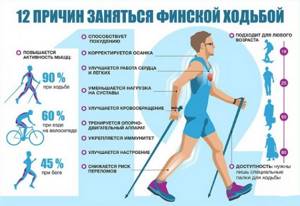
Even regular walking affects the body's use of energy. Scientists estimate that you need to take 10,000 steps daily to maintain a normal metabolic rate. To increase energy expenditure, it is better to take walks in the fresh air so that the body receives a sufficient amount of oxygen.
| Type of walking | Calorie consumption per 1 kg of weight for 1 hour |
| Walking 4 km/h | 2,7 |
| Walking 6 km/h | 4 |
| Race walking | 6 |
| Walking uphill | 6,9 |
| Walking the dog | 2,5 |
Calorie consumption when swimming
Swimming is a good way to combine business with pleasure. Being in water helps strengthen muscles, cardiovascular and nervous systems, as well as improve mood. Swimming is an excellent choice for people who don't like the classic monotony of cardio or strength training. There are practically no contraindications for swimming in the pool.
In addition to the fact that a person needs to make voluntary movements with his arms and legs, it is necessary to overcome the resistance of the water, which greatly increases the difficulty and increases calorie consumption. The rate of calorie consumption is also affected by the temperature of the water, since the body has to draw additional energy to prevent hypothermia.
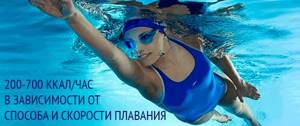
The most optimal water temperature for this is 25-27 degrees. With such indicators, the human brain will perceive the water temperature as potentially dangerous to health, but the body will be comfortable in the water, and the body will spend 20-40 additional calories per hour. To maximize calorie consumption, you need to be in the water for at least 2 hours.
| Type of swimming | Calorie consumption per 1 kg of weight in 1 hour |
| Regular swimming 0.4 km/h | 3 |
| Fast swimming 2.4 km/h | 7,1 |
| Swimming crawl (slow/fast) | 7/8 |
| Breaststroke swimming | 10 |
| Butterfly | 10,3 |
Professional activity
- Writing letters by hand – 0.0240
- Working on a computer/typewriter – 0.0333
- Working at the cash register – 0.0247
- Work of a surgeon (operating on patients) – 0.0266
- Laboratory work – 0.0360
- Concrete worker's work – 0.0855
- Bricklayer's work - 0.0952
- Carpenter's work – 0.0833
- Carpenter's work – 0.0571
- Combiner work – 0.0378
- Bookbinder's work – 0.0405
- Work of a tailor / seamstress – 0.0321
- Shoemaker's work - 0.0429

Calorie expenditure in team sports
Some types of team sports are quite energy-intensive. Engaging in one of these sports can also significantly increase calorie consumption.
The most intense types of team competitions are played with a ball. 1st place among them is occupied by water polo, which involves burning 8.9 calories per 1 kg of weight in 1 hour. 2nd place is occupied by football and basketball, which use 6.4 and 5.3 calories, respectively. Next comes handball - 5.2 calories. Volleyball comes in last place with 3.6 calories.
Energy expenditure by physical activity group
Scientists from Canada have proven the fact of increased energy consumption during mental activity while working at a computer. To do this, the body spends on average 1.4 calories per 1 kg of weight for 1 hour, if the activity involves only working with the mouse.
When typing at high speed, consumption increases to 2.1 calories. When working continuously at a computer for 6 hours, you can spend about 12.6 calories per 1 kg of weight.
Even simply doing everyday household chores requires the use of extra energy. And if you add other physical exercises to this (squats, jumping, bending), then calorie consumption can be doubled.
| Kind of activity | Calorie consumption per 1 kg of weight in 1 hour |
| Bed cleaning | 1,2 |
| Cleaning floors with a mop | 2,4 |
| Manual floor washing | 3,9 |
| Handwash | 1,9 |
| Dusting | 1,4 |
| Window cleaning | 1,9 |
| Cooking food | 1,5 |
| Work in the garden | 3,7 |
The work of the human body is a continuous expenditure of energy that occurs during the functioning of the cardiovascular system, liver, lungs and other systems and organs. According to scientific research, one kilocalorie is consumed per kilogram of human weight.
With simple calculations, it turns out that the human body alone consumes about 1800 calories per day.
The figure is very average, since this indicator is individual and depends on:
- gender;
- weight;
- age (full years);
- growth;
- the presence of fat deposits.
In order to increase the consumption of kilocalories, it is necessary to make additional movements and be physically active.
| Activity group | Possible job | Calories burned per day |
| Sedentary mental work | people working in the office, accountant, | 2250–2500 |
| Sedentary work with muscle activity | teacher, salesperson, cashier, driver | 2650–2800 |
| Working with constant light muscle load | doctor, bank employee, cook or waiter, courier, conductor | 3000–3150 |
| Working with relative muscle load | mechanic, surveyor, painter, agronomist | more than 3500 |
| Work considered hard | shop worker, professional athlete, loader, digger | more than 4000 |
| Hard work | mine worker, steelworker, mason | more than 5000 |
There are quite a few tables on the Internet offering to calculate the calories consumed per day. But it is worth noting that they do not take into account factors such as height, age and others.
| Coefficient (A) | Physical activity |
| 1,9 | Everyday active physical activity. Doing hard work. |
| 1,73 | Daily intense workouts twice a day. Performing work that is considered difficult. |
| 1,64 | Intense training once a day, every day. Performing work that is considered difficult. |
| 1,55 | Intense training 5 times a week. Performing work with a relative load on the muscles. |
| 1,46 | Moderate intensity training 5 times a week. Performing work with constant light muscle load. |
| 1,38 | Moderate intensity training 3 times a week. Performing sedentary work with muscle activity. |
| 1,2 | Complete lack of physical activity or its minimum level. Performing sedentary mental work. |
(your weight in kg * 10) (your height in cm * 6.25) – (your age, completed years * 5, for men add 5 to the amount received, for women subtract –161)
The amount you receive must be multiplied by the selected coefficient. This will give you the total calories burned per day.
Determination of daily energy consumption using the time-table method
The time-table method is a simple and quick method for determining a person’s daily energy expenditure. The method includes timing of individual types of human activity per day and calculation of energy consumption using special tables, both for individual types of activity and for the day as a whole. This method includes basal metabolic data.
Each state of the body, each type of activity (sleep, work, rest, etc.) is accompanied by a certain amount of energy expenditure, which forms the total amount of energy expenditure per day. Therefore, the first stage in determining this value is to take into account the duration of individual states of the body and types of activity throughout the day, i.e. determining the time budget.
In practice, a combination of timekeeping and personal records is usually used. It is necessary that the day chosen for timing be typical and the types of work performed characterize the average physical activity. If the total amount of time spent on all activities is equal to 24 hours (1440 minutes), then the timing is correct.
The whole day is described in detail, minute by minute, by type of activity (first column of the table). In this case, it is necessary to separately highlight training sessions with static load, classes with muscle load, time spent on rest, nutrition, hobby activities, etc. If a given day included a sports activity, then it should be divided into 3 parts by time (warm-up, main, final) taking into account the type of activity. The second and third columns reflect the time spent on each activity.
Energy consumption (energy consumption) per 1 kg of weight per 1 minute (fourth column of the table) is determined from the table data in accordance with the type of activity. Energy consumption during activity (fifth column) is calculated by multiplying activity time (third column) by energy consumption per 1 kg per minute. (fourth column).
Processing timekeeping data involves summing up the time spent on the same type of work performed at different times of the day (for example, walking, eating, sitting, resting, etc.). Timing data is entered into work table 11.
Table 11
Determination of daily energy costs (sample)
| Types of activities per day | Time from... to... | Activity time in min. | Energy consumption per 1 kg per 1 min | Energy consumption during activity |
| Charger | 7.10-7.30 | 0,0648 | 0.0648 x 20 = 1.296 | |
| Shower | 7.30-7.40 | 0,0329 | 0.0329 x 10 = 0.329 | |
| Bed making | 7.40-7.50 | 0,0329 | 0.0329 x 10 = 0.329 | |
| Breakfast | 7.50-8.20 | 0,0236 | 0.0236 x 30 = 0.708 | |
| … | … | … | … | …… |
| Dream | 23.00-7.00 | 0,0155 | 0.0155 x 480 = 7.44 | |
| Total | Σ=43.902 |
The given data includes energy consumption for basal metabolism. If one or another type of work performed in the table. is not specified, they take a type of activity close to it in nature.
To obtain daily energy expenditure, it is necessary to multiply the total value of energy expenditure (5th column of the table) by the weight of the subject. To the resulting figure, add 15% of the daily energy consumption (these are unaccounted energy costs associated with possible inaccuracies in the calculation method).
Example: if the sum of energy costs was 43.902, and the weight of the subject was 74 kg, then the daily energy consumption is calculated as follows:
1) 43,902 × 74 = 3248,7;
2) 3248,7 × 15 / 100 = 487;
3) 3248 + 487 = 3735 – daily energy consumption.
Compare with hygiene standards depending on professional affiliation. Draw conclusions and give recommendations for optimizing energy costs.
Table 12
Energy consumption during various activities per 1 kg of body weight per minute (including basal metabolism)
| Kind of activity | Energy consumption kcal/kg/min. | Kind of activity | Energy consumption kcal/kg/min. |
| I. Dream | 0,0155 | badminton | 0,0833 |
| 1. Study time | billiards | 0,0416 | |
| Listening to lectures | 0,0243 | baseball | 0,0657 |
| Practical laboratory exercises | 0,036 | basketball | 0,2042 |
| Practical seminars | 0,025 | boxing | 0,2142 |
| Practical seminar-laboratory classes | 0,03 | horseback riding | 0,0914 |
| Breaks | 0,0258 | volleyball | 0,0773 |
| 2. Extracurricular time | running at a speed of 8 km/h | 0,1357 | |
| Preparation for classes | 0,025 | running at a speed of 180 m/min | 0,178 |
| Getting ready for classes | 0,0455 | running at a speed of 320 m/min | 0,32 |
| Road: | gymnastics (floor exercises) | 0,0845 | |
| walking along an asphalt road (4-5 km/hour) walking along a field road (4-5 km/hour) | 0,0597 | gymnastics (exercises on apparatus) | 0,128 |
| walking on a snowy road | 0,0626 | golf | 0,0742 |
| walking at a speed of 6 km/hour | 0,0914 | rowing | 0,11 |
| walking at a speed of 8 km/hour | 0,0714 | judo | 0,3252 |
| riding in public transport | 0,1371 | cycling (13-21 km/h) | 0,1285 |
| 0,0267 | skating | 0,1017 | |
| 3. Homework | skiing (ski preparation) | 0,0546 | |
| Floor cleaning | 0,0548 | skiing (cross-country travel) | 0,2086 |
| Washing dishes | 0,0343 | skiing (training lessons) | 0,1707 |
| Dusting | 0.0411 | motorball | 0,1485 |
| Sweeping the floor | 0,0402 | swimming | 0,119 |
| Ironing | 0,0323 | rugby | 0,1957 |
| Washing clothes by hand | 0,0511 | handball | 0,1957 |
| Sewing, hand knitting | 0,0265 | shooting lessons with a gun | 0,0893 |
| Purchase of goods, products | 0,045 | tennis | 0,1095 |
| Care for children | 0,036 | table tennis | 0,0666 |
| Working on a private farm | 0,0757 | football | 0,119 |
| Wood cutting | 0,1143 | Ice hockey | 0,4 |
| Household work | 0,0573 | 6. Work in production | |
| Cooking food | 0,033 | Concrete worker's work | 0,0856 |
| Care of premises, furniture, household appliances | 0,0402 | Brainwork | 0,0243 |
| 4. Self-service | The work of a surgeon | 0,0855 | |
| Bed making | 0,0329 | Working in the laboratory while standing | 0,036 |
| Eating while sitting | 0,0236 | Working in the laboratory while sitting | 0,025 |
| Washing (to the waist) | 0,0504 | Working in a scientific laboratory | 0,0309 |
| Shower | 0,057 | Bricklayer's work | 0,0952 |
| Personal hygiene | 0,0329 | Working on a combine | 0,0378 |
| Cleaning clothes and shoes | 0,0493 | Work in an institution | 0,0257 |
| Putting on and undressing clothes and shoes | 0,0264 | Driving vehicles | 0,0228 |
| 5. Free time | Tailoring | 0,0414 | |
| Rest standing | 0,0264 | Work in the service sector (repair) | 0,0328 |
| Rest while sitting | 0,0229 | Hairdresser's work | 0,0333 |
| Rest lying down (no sleep) | 0,0183 | Working in the canteen | 0,0566 |
| Reading silently | 0,023 | Working in a bakery | 0,0383 |
| Reading aloud | 0,025 | Working at a brewery | 0,045 |
| Writing letters | 0,024 | Laundry work | 0,0566 |
| Easy dancing | 0,0596 | Work in light industry | 0,0466 |
| Dancing energetic | 0,1614 | Work of a nurse, orderly | 0,055 |
| Singing | 0,029 | Carpenter's work | 0,0833 |
| Game of chess | 0,0242 | Postman's job | 0,0857 |
| Social work | 0,049 | Shoemaker's work | 0,0429 |
| Sundays (territory cleaning) | 0,069 | Work in agriculture | 0,0785 |
| Physical education and sports activities: | Locksmith's work | 0,05 | |
| morning exercises (physical exercises) | 0,0648 | Truck driver work | 0,0466 |
Table 13
Calculation of an athlete's daily energy expenditure (sample)
| Activities | Time (from-to) | Duration (min) | Energy consumption in 1 minute per 1 kg of weight (kcal) | Energy calculation (kcal/day/kg) |
| Charging (physical control) | 8.20-8.30 | 0.0648 | 0.648 | |
| Personal hygiene | 8.35-8.40 | 0.034 | 0.17 | |
| Bed making | 8.40-8.42 | 0.0329 | 0.0658 | |
| Breakfast | 8.42-8.50 | 0.0236 | 0.188 | |
| Walking | 8.50-9.00 | 0.069 | 0.69 | |
| Training sessions | 9.00-12.30 | 0.025 | 5.25 | |
| Dinner | 12.30-12.50 | 0.0236 | 0.472 | |
| Rest lying down | 12.50-13.05 | 0.019 | 0.285 | |
| Training sessions | 13.15-16.30 | 0.025 | 4.875 | |
| Walking | 16.30-17.00 | 0.069 | 2.07 | |
| Training: | ||||
| Training, warm-up | 17.00-17.30 | 0.136 | 4.08 | |
| Training main part | 17.30-18.30 | 0.150 | ||
| Final part of the training | 18.30-19.00 | 0.100 | ||
| Taking a shower | 19.00-19.15 | 0.0329 | 0.4935 | |
| Putting on clothes | 19.15-19.20 | 0.028 | 0.14 | |
| Walking | 19.20-19.30 | 0,069 | 0.69 | |
| Dinner | 19.30-19.45 | 0.0236 | 0.354 | |
| Rest while sitting | 19.45-20.00 | 0.023 | 0.345 | |
| Walk | 20.00-22.30 | 0.069 | 10.35 | |
| Personal hygiene | 22.30-23.00 | 0.034 | 1.02 | |
| Dream | 23.00-8.20 | 0.0155 | 7.75 | |
| Total: | 24 hours | Σ=43.902 |
43.902 * 74 kg = 3248.7 kcal.
3248.7 * 15/100 = 487 kcal.
3248 + 487 = 3735 kcal (Daily energy expenditure)
Independent work:
Determination and assessment of individual daily energy consumption using the time-table method using a table.
Calorie consumption when dancing
Dancing is not only a beautiful sport. Dancing is a great way to strengthen your muscles and heart, increase your flexibility, improve your overall well-being and get rid of fat deposits.
All this together allows not only to strengthen muscles, but also to significantly increase calorie consumption, since intense body movements force the heart to work at an accelerated rhythm, and this increases the pulse.
| Type of dance | Calorie consumption per 1 kg for 1 hour |
| Pool dance | 5 |
| Hip-hop | 6,1 |
| Ballet | 9,1 |
| Ballroom dancing | 6,5 |
| Salsa | 6,3 |
| Bachata | 5,9 |
| Contemporary | 4,7 |
| Sports ballroom dancing | 9 |
| Rumba | 7,1 |
| Waltz | 8 |
| Strip of plastic | 5,3 |
| Tango | 4,3 |
| Locking | 8,3 |
| Tap dance | 7,8 |
| Crump | 6,4 |
| Variety dance | 8,2 |
| Russian folk dance | 9,1 |
| Woking | 4,1 |
How to increase calorie expenditure?
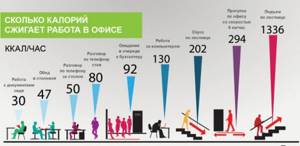
Calorie expenditure during various activities can be significantly increased. To do this, you need to follow simple recommendations every day, which will require additional energy expenditure from the body.
- Immediately after waking up, do not get out of bed, but do breathing exercises and the “bicycle” exercise. Breathing exercises saturate cells with oxygen, and the “bicycle” exercise helps strengthen joints and the musculoskeletal system, and also has a positive effect on the functioning of the intestinal tract and starts metabolism.
- Carry out morning procedures with cold water if possible: wash your face with ice water and take a cool shower.
- Next, you should drink 200-400 ml of cool (but not ice) water 20-30 minutes before meals. The body will give off energy to heat the water to a comfortable temperature.
- If time permits, it will be useful to do some light exercises. If you have very little time, you can perform the “plank” exercise, which takes no more than 1 minute.
- Be sure to have breakfast. Skipping your first meal will lead to overeating throughout the day, which will slow down your metabolism.
- If possible, avoid using elevators and public transport; Walk as much as possible and spend time outdoors. A sufficient amount of oxygen in the body has a positive effect on calorie expenditure.
- Drink 1.5-2 liters of clean cold water. Water directly affects metabolism.
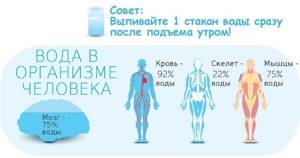
- During the day, do not eat sweet pastries or processed foods as a snack. Once in the body, sugar causes an increase in insulin levels, which blocks the action of lipase. It is the lipase enzyme that helps release energy from fat cells, which leads to the burning of calories. And trans fats not only slow down calorie consumption, but also contribute to the accumulation of fat deposits.
- For dinner, choose foods rich in proteins and fiber.
- Go to bed no later than 22-00. Scientists have proven that maximum calorie consumption during sleep occurs between 22:00 and 02:00.
Calorie consumption occurs constantly, regardless of the type of activity. With a balanced diet and various physical activities, the metabolic rate will be constantly high, and this will lead to increased burning of calories.
Article design: Anna Vinnitskaya
